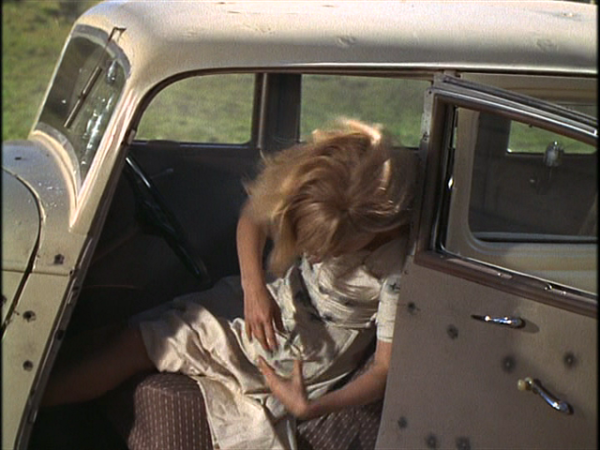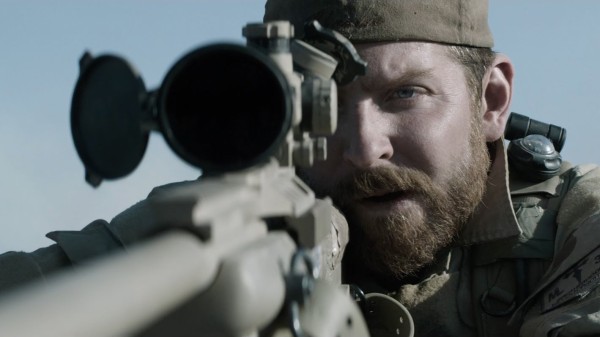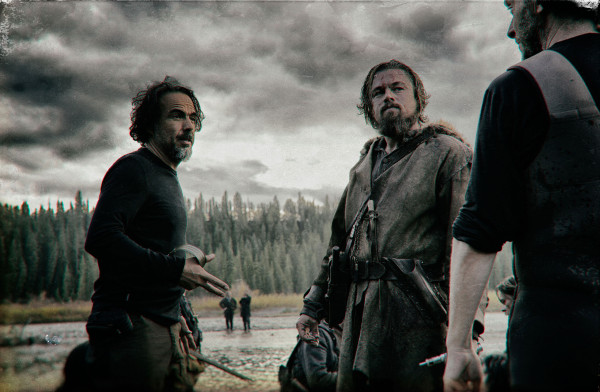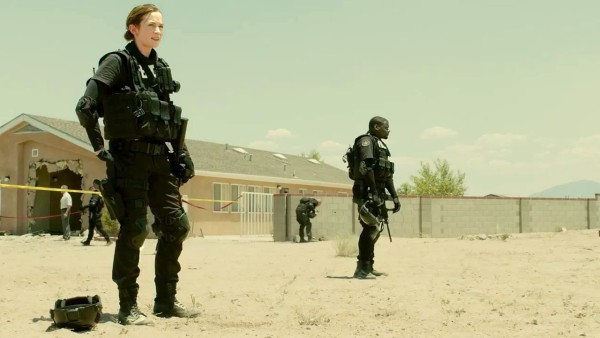Recent hyper-violent movies have some unlikely detractors.
Every time there’s a mass shooting in America, the national response is grimly predictable. Those on the left call for stricter gun control; those on the right—such as Wayne LaPierre of the NRA—engage in a particularly sanctimonious and grating form of existential soul searching. “What is it about our sick culture that drives men to commit such atrocities?,” they lament before pointing out that the “Media” and “Hollywood” are culpable for the culture of violence that they peddle.
Ah yes, the sick culture. Truthfully though, who isn’t sickened by the culture? Even if you find yourself at a peak cultural experience (great seats for a performance of Hamilton; the Kubrick exhibit at LACMA; you’re in the audience when MTV magically reboots Unplugged with Kendrick doing To Pimp a Butterfly with Kamasi Washington), there’s a good chance you could walk outside and see a couple taking a selfie of themselves reenacting the spaghetti part of Lady and the Tramp with a pizza roll dipped in ranch. Here are some facts about our sick culture: gun deaths and violent crime are significantly lower than their peak in the early ‘90s, but mass shootings are up; gun sales are soaring (seriously, if you’re an unscrupulous prick open a gun shop in a conservative district. You’d make money so fast you could buy a foreclosed Vegas condo in time for a sick 4th of July kicker), and of course, movies and narrative media have become exponentially more violent. The last few years have thrown up some spectacularly unapologetic blood baths. Some of them make their way into the awards season.
When Bonnie and Clyde was released in 1967 it was decried and hyped as the most savage and brutal movie ever made. Now, it would barely muster a PG-13 rating and could be shown on any major TV network. However, the supremely awkward sex scene (basically Warren Beatty sweatily apologizes for his failed boner and there’s a couple of seconds of Faye Dunaway’s side boob) would earn it an immediate R rating and banish it to pay cable. Weirdly, movies have gotten more violent and more prudish. This is literally a reflection of the law of the land, as the Supreme Court decided in Brown v. Entertainment Merchants Association (ruling that violence in video games was a protected first amendment right). My favorite disreputable genre, the erotic thriller, has all but disappeared, so far gone from its ‘80s heyday of steam, sex and sax soundtracks (and usually starring Mickey Rourke as a young millionaire who made his fortune in “real estate” and is highly skilled in martial arts and mind games). Last year’s sexy event movie, 50 Shades of Grey, makes a tepid adult drama like Indecent Proposal (1993) seem like Last Tango in Paris. I can think of no movie that has ever received the NC-17 or Unrated rating purely for violence. So we live in a time where bloodthirstiness and weaponry are protected by the full force of federal law and Blue Valentine receives an NC-17 to shield children from the scarring horror of Ryan Gosling going down on Michelle Williams in a cab. Maybe this is a sick culture.
Recently, I spent a very lazy Saturday watching four movies on my couch. For whatever reason, all four were violent films and came from different corners of the global culture. Before proceeding, let me note that I am not a squeamish viewer. I somehow saw The Exorcist when I was five years old; I’m a big fan of Gaspar Noe’s films; I “like” Pasolini’s Salo as much as you can like that movie (some greasy man-bunned hipster in a keffiyeh once told me that Salo was the only movie he watched. I simply said: “You sir, are a pervert” and walked away). There are few representations of violence I can’t stomach, though I like to think I’m not so dead inside as a Houellebecq character that I can’t react.
The first of my quartet of movies was a South Korean film called I Saw the Devil. Despite, or maybe because of its stability and safety (with half the murder rate of the U.S.), South Korea makes the most violent and downright gnarly mainstream movies in the world. Following Chan Wook Park’s revenge trilogy (which is most famous for Oldboy), I Saw the Devil upped the gore to a kind of ludicrous fever dream with the moral insight of a boarding school essay on A Separate Peace. A filthy animalistic bus driver butchers the pregnant wife of a supercop (who hates smoking and does reverse crunches with his ear-piece IN). After a spectacular sequence where he finds the wife’s severed head in a river, the supercop tracks the killer down, beats him nearly to death, implants a GPS tracker in his neck and then lets him go. Wash, rinse, repeat—spoiler: the supercop becomes as unhinged as his prey.
I Saw the Devil is easily the most violent movie I watched in 2015: bodies are dismembered, cheeks are punctured, throats are slashed, the killer has a rendezvous with his monstrous oaf of a brother whose is a slobbering cannibal. (And yet, nothing in the film matched the bone-chilling cruelty and nihilism of Old Boy.) I Saw the Devil peddles in the gore du jour of this decade: shock without gravitas, violence without true pain. There’s the usual brutalization of helpless women—endemic in this vein of global gore movies—that’s supposed to announce just how twizted and cutthroat the villain really is. And there’s such a cheapness to it, a grim commodification of victimology, that doesn’t so much a unsettle as remind one of how large and cynical the machine really is.
The next film I watched was Nicolas Winding Refn’s extremely bonged-out existential Viking blood fever, Valhalla Rising. Refn, a Dane, broke in the U.S. with 2011’s Drive, that divisively brutal and empty glass neon flicker of perverted Miami Vice nostalgia. If anyone takes the oath of the Godard maxim “It’s not blood, it’s red,” it’s Refn. Valhalla Rising has an extremely loose “plot.” A super-savage Viking (Mads Mikkelsen) is kidnapped by some other Viking dudes, kills them like a Bosch, teams up with some fanatical Christians on the Crusades and that’s… about it. Low-budget and formless, Valhalla Rising still casts a heavy bad vibe like an upper-echelon doom-metal album.
Refn is a bit of a poser but a hell of a craftsman (that skill set can get you quite far: see the career of Beach House) and the violence is sudden and cavalier and gratuitous in the way violence is in real life. Valhalla Rising is about the narcotic faith in violence, how marauding men become the gods of their own pointless, endless fables and ruin everything, and its themes are unfortunately never not relevant.
The next film was a 2008 dollar-theater super-hero flick that has achieved cult-bro status (Patton Oswalt is a fan), called Punisher: War Zone. It’s success is a little puzzling. Dominic West plays a villain named Jigsaw who looks like one of those evil Slipknot masks. There’s something very nu-metal about this “dark” take on superhero movies. Starting with The Crow, which has taken on a hushed, haunted quality because of Brandon Lee’s freak-accident death on set (and despite it aging into a laughable paean to suburban goth angst) and buttressed by Spawn, Sin City, 300, Watchmen and that idiotic Hansel and Gretel witch-hunting movie, this sub-genre of hard R comic-book adaptations is the nadir of aesthetics, like being trapped in a really expensive haunted house in a town crippled by meth. There’s something especially bankrupt in the way these movies dirty up what are essentially children’s stories, as if updating these characters to a pitiless cold world somehow instills them with a mythic resonance. I think that’s what I find tiresome about this new commonality of explicit violence: its crass laziness, like an emotional auto-tune. Why try to make something clever (like say a Larry Cohen movie) when you can take down some swarthy parkour traipsing thug with a rocket, or blow him up like a bullfrog stuffed with an M-80? I think this violence (and by artier extension I Saw the Devil) “offends” me not because it’s horrible and bloody, but because it’s part of phalanxed siege of aggressive and pedestrian taste. These are really just overly realistic video games that seem tacitly funded by whatever Blackwater is called now, with endless miles of vape stores and chain sub shops, the fetishization of handgun styles, and gun-metal coated Oakleys and leather dusters. It’s as if the bank lobby scene at the end of the first Matrix movie went on and on and parted the Red Sea and then aerialed into the 21st century, firing an assault rifle in slow motion.
The last movie I sat through that day was American Sniper, Clint Eastwood’s staid, reverent biopic of Chris Kyle, the conservative hero and deadliest sniper in U.S history. As a disclaimer, I think Clint Eastwood is the most overrated director of all time to be bestowed with “auteur” status. With the exception of Play Misty for Me and Unforgiven (and maybe Bird and Sands of Iwo Jima) Eastwood is a workmanlike and joyless director. Studios love him because he shoots fast and comes in under budget, and audiences love him because… . I’m not totally sure. His movies are usually under two hours? American Sniper is defiantly sleepy and dull which is probably why it was such a huge hit. It reduces war and terrorism to a clichéd macho pablum of “protecting the sheep from the wolves.” Brave Chris Kyle (Bradley Cooper went in on his performance and it elevates the movie above the rest of its country music video vibes) sees 9/11 on TV and then… is in Iraq sniping masked pirates named Mustaffah and agonizing over shooting children who wield rocket launchers. Nothing is made of connecting 9/11 to Iraq; the violence is mild and tasteful; the PTSD is reserved to a grizzled, stifled cry in a generic bar. While watching these four movies I thought about how easy—how rote—violence is in comic fantasies, Nordic fugues, east-Asian winter revenges, and gas-station comics—and how chaste it is in comparison when it’s recent and real. The Hurt Locker, Zero Dark Thirty, Lone Survivor, and even the dustier, grittier Blackhawk Down have a sheen, a distance to the lens of war and suffering. There’s some justification for this in the name of “respect,” but it’s about compartmentalization, really. We weren’t even allowed to view the caskets coming home. I don’t mean to moralize; I think this Robocop ‘future’ we’re experiencing now is somewhat amusing, and by many metrics, the world really is safer than it has been. But several endless real global wars are sanitized to just an ambient buzz, while narrative media has gotten more savage and violent, and so sometimes I do feel that part of living has become bailing out a slowly flooding boat in perpetuity.
This unease pervaded 2015, a year of statistical safety and peace marked by routine mass shooters and terrorists of a rainbow spectrum of fanaticism, and police murdering unarmed black people, and ISIS snuff-film executions, and apocalyptic wanton destruction of Yemen and Syria.
On that note: A couple of award-season films stand out to me as reflections on this schism of serenity and the drone of persistent cruelty and chaos.
The Revenant, the great western of the year (despite Tarantino’s The Hateful Eight), arrives with the awkwardness of weapons-grade award campaigning. I find it extremely easy to imagine Leonardo DiCaprio screaming at his Apple Watch “We’re getting me the Oscar!” Inarritu won all the directing awards for the showy Birdman last year and he is tumescently emboldened. Filming in natural light? Check. Leo really eats a raw bison liver? Check. Em Lubs shooting those virtual reality-like tracking shots? Check. The Revenant is the most expensive, teched-out and violent YA novel ever realized to the screen. The plot is basically if a hammered-drunk James Fenimore Cooper told a weird story at a bar before falling asleep. Leo is a scowling trapper with a half-native son; he gets mauled by a ruthless CGI bear and left for dead by a treacherous Tom Hardy. Leo seeks revenge and gets the sickest core workout of his life, the end. The vanity of Leo’s Oscar push synched to this masochistic masterclass in manliness is a bit embarrassing. Remember how Matt Damon wrote himself in Good Will Hunting as literally the smartest person in the world? Well Leo plays the toughest bro who ever lived. The litany of grotesque feats of survival reached a point that when Leo disembowels a horse and climbs into the carcass for warmth, I couldn’t help but cackle. Still, The Revenant contains a few spectacular sequences (the landscape shots are almost too beautiful—sometimes the movie feels like BBC’s Planet Earth series if it were based on Nietzsche’s Thus Spoke Zarathustra). Despite Leo’s Joseph Campbell-Robert Bly-men’s-retreat getting center stage, it’s Tom Hardy as a feral, scalped trapper who’s the real star. Looking sort of like if Mick Foley became a survivalist, Hardy plays a violent, miserable, racist, terrified man and there’s a cold brace of truth and history to the character and performance. When one character asks what’s more important to him, his life or the bales of fur pelts they have to hastily ditch, Hardy responds: “Life? What life? All I got is living and the only way I know how to do that is getting these pelts!” It’s a merciless and mordantly funny line and the violence in The Revenant, when it’s not the Passion of Dicaprio, has a suddenness and serenity to it not unlike the most affecting parts of Valhalla Rising, where violence blooms effortlessly as if in time-lapse, and it feels like the deepest of nightmares—the ones where something you did in real life goes completely off the rails.
My favorite movie of the year, Sicario, is also the most upsetting. What easily could have been a routine tactical procedural (hella Kevlar and Oakley blades) instead is a supremely disquieting horror movie about endless wars and the callous men flying in and out of a fortified castles while keeping the trauma at a simmer. Sicario depicts Juarez as a hell just across the river, kept ablaze by a murderous chess match between shadowy military industrial complex cowboys and mournfully stoic cartel family men. The movie received some pushback from the mayor of Juarez who protested that Juarez was no longer as dangerous, so it’s best to imagine it takes place in 2010 when almost a hundred people a day were murdered there, making it the most violent city in the world.
But much of Sicario’s weight comes from its symbolic depiction of Juarez. Britt Hayes astutely writes:
“It is, essentially, the best film about sexual assault that features no actual sexual assault. Instead, Villeneuve brilliantly uses the idea of rape in abstract, the entirety of Sicario permeates with that specific feeling of helplessness, despair, and suffocation.”
Sicario, like the best “violent” movies (where the act and threat of violence is a central character and theme)—Eastern Promises, Taxi Driver, Sexy Beast—gets that when you see something horrible, a painting is created that hangs in your mind until you die. It is immediately aestheticized and frozen and the memory is awful and beautifully vivid. Thus, I remember my coworkers in Beijing getting into an emotional fistfight and one getting hit in the eye and crying rage tears of blood. I remember seeing a car outside my sister’s gallery flip onto its side and hit a telephone pole, and when I went to help the driver he was clutching his arm and when he let go a stream of hot blood from a cut artery hit me in the face—warm, the way I’d imagine milk from an udder. And I remember these moments as clearly as the swallows darting in an out of the mist and rainbows off Iguazu Falls, and the poles turning gold with sunset at Walter Di Maria’s Lightning Field. It’s true, it is red, but it really stains.










2 comments
This essay is like the Dennis Miller of writing (and I bet Tipper Gore would agree). Seriously though, isn’t this just a really long way of saying we need better porn?
I just got back from seeing The Revenant, and it is both brutal and brilliant. You said that you couldn’t think of a movie that was rated NC-17 or released unrated solely because of violence, but I can think of a few from decades past. Henry: Portrait of a Serial Killer was released unrated after it received the X or NC-17 (I can’t remember if it came out before or after the creation of that NC-17 rating). There were a few other movies in the ’80s that were released in both R-rated versions and unrated versions with additional violent content (Re-animator comes immediately to mind). In this age of CGI special effects, filmmakers can now create any image that suits their story including images of violence that couldn’t have been included in previous eras. When I saw Final Destination, I was amazed that the movie garnered just an R-rating. If the special effects wizards of the 1980s could have created such sequences with non-CGI technology, that movie would most assuredly have received an X or NC-17.
Since CGI is so prevalent, we have become used to seeing it. We see a violent sequence on screen, and our mind tells us it’s fake because we know it was created with computer technology. So, I think, we have become jaded. The ratings, therefore, have been relaxed in regards to violent content. When we see graphic nudity or sex, we know that that image wasn’t created with a computer and that the actors in the scene really put themselves out there in that manner. I don’t know why this should make a difference to the people who rate movies, but it still does. I wish it didn’t.